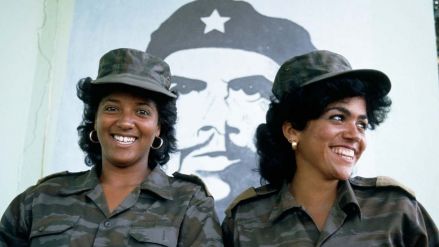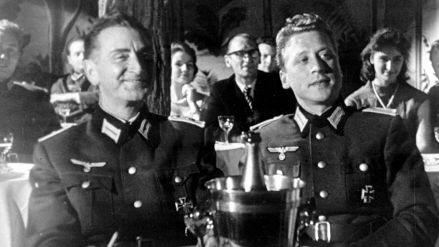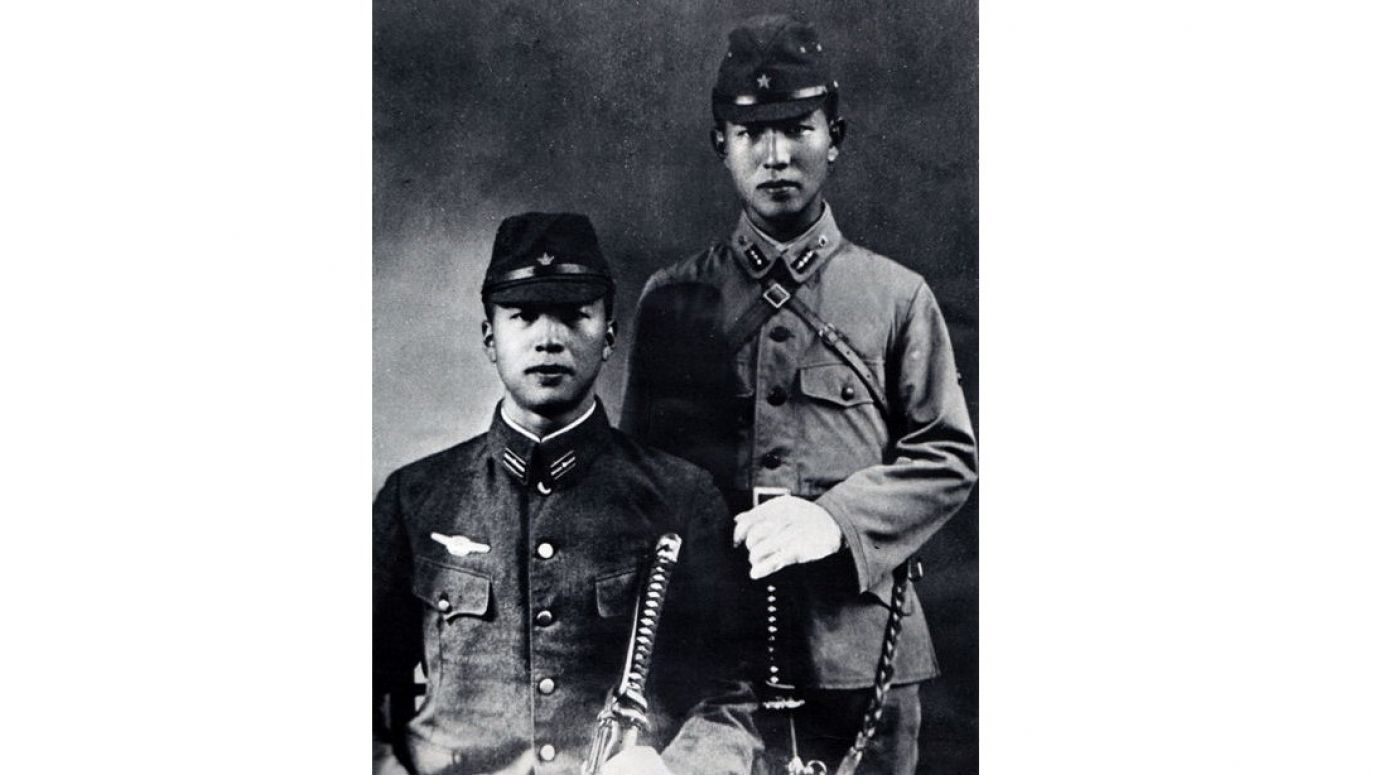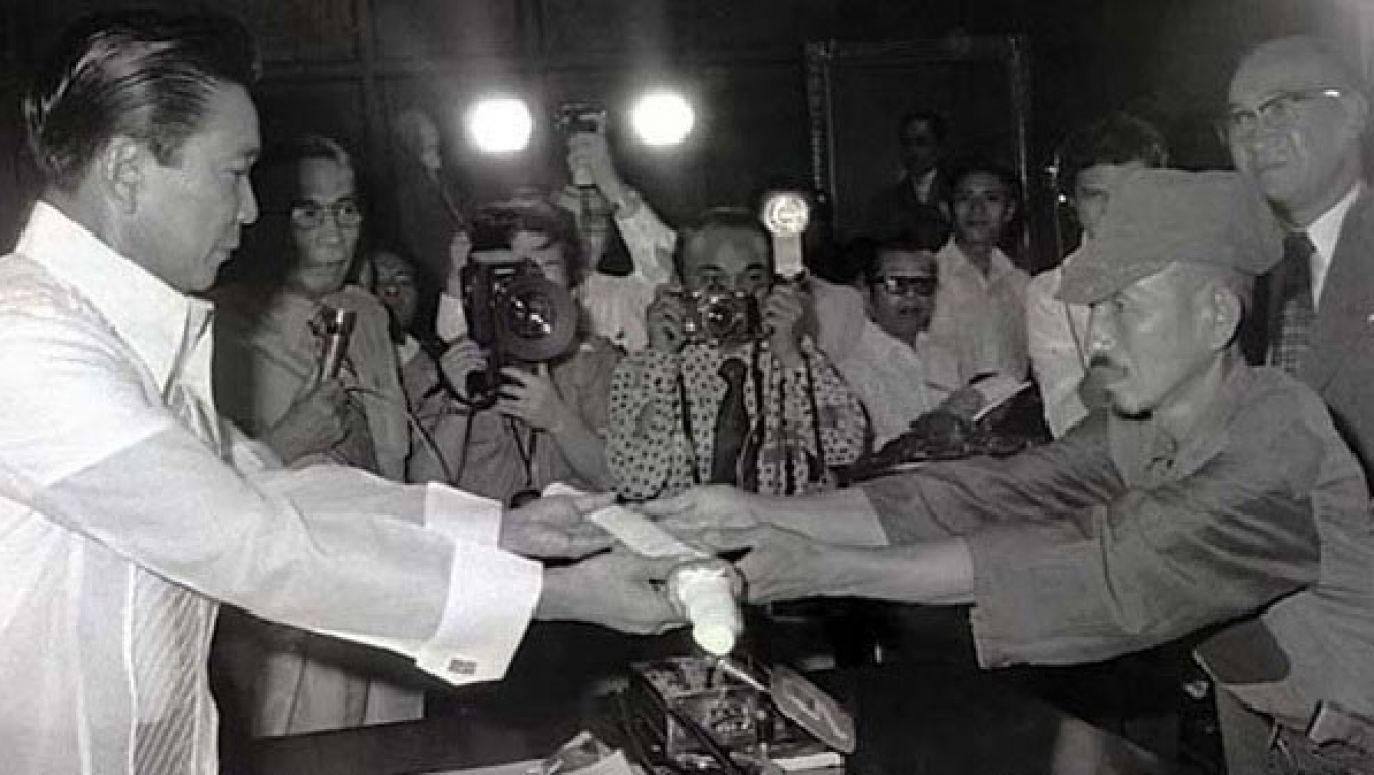An intelligence officer spent 30 years in the forest fighting the enemies . For him, the war ended in 1974
23.03.2022
When he surrendered, he was carrying a rifle, ammunition, grenades and even an Imperial Japanese Army officer’s sword. The sword was ceremoniously handed over to Philippine President Ferdinand Marcos, who pardoned the Japanese officer. – I was doing my duty – he stated after spending 10000 days in the jungle.
– Taking your own life is absolutely forbidden. The fight may last three years, or even five, but no matter how long it takes, we will come back for you. As long as there is even one soldier in your brigade, you are to be its commander. Under no circumstances are you to take your own life – Hirō Onoda (小野田 寛郎), a Japanese intelligence officer, heard from his commanding officer before a special mission in the Philippines.
There was fierce fighting in the Pacific between the United States and Japan. World War II was slowly coming to an end. But this was not the case with Hirō Onoda, who took the order of Major Yoshimi Taniguchi deadly seriously and did not lay down his arms after the surrender of Japan on 2 September 1945. Actually, there would be nothing shocking about this – after all, there is a plethora of documented examples of guerrilla warfare – if it were not for the fact that Onoda carried it on for another (mind-boggling!) 29 years; until 1974.
Saturday 19 March 2022 marks the 100th anniversary of the birth of Lieutenant Hirō Onoda. His improbable story may be perceived as madness. Though certainly not in Japan. For in the Land of the Rising Sun, Lieutenant Onoda is a hero, an example of loyalty to the emperor and the motherland.
Destruction of infrastructure
With the raid on the Pearl Harbor base in Hawaii on 7 December 1941, Japan declared war on the United States. At the same time, the Imperial Japanese Army invaded the Philippines, which was in the American sphere of influence. Emperor Hirohito’s soldiers managed to surprise the US-Filipino army, led by General Douglas McArthur. As a result of the smoothly conducted campaign, the entire archipelago came under Japanese control.
This situation lasted for about two years. In the autumn of 1944, the second Philippine campaign began, this time under the sign of the American counter-offensive, which lasted until the summer of 1945. And here one must pause – for in the meantime, in December 1944, a 22-year-old Second Lieutenant Hirō Onoda landed on the small island of Lubang, located near the “entrance” to Manila Bay. And he took command of a brigade which (besides the young officer) included Corporal Shimada Shōichi, as well as PFCs Kozuka Kinshichi and Akatsu Yūichi.
Their task was to create a diversion. Above all, to destroy the infrastructure of the small port and airfield located on the island in order to make it more difficult for the Americans to carry out an invasion.
Stay alive
This was Onoda’s fifth year of service in the Imperial Japanese Army. Before he joined its ranks, he had tried his hand at the trading business. In 1939, the 17-year-old Onoda went to China, to the Japanese-occupied city of Hankou (now part of Wuhan – the city from where the COVID-19 pandemic spread), as a result of the Second Sino-Japanese War that began in 1937, where he took up a job at the Tajima Yoko company. Working behind a desk didn’t seem to catch Onoda’s fancy, however, and he soon decided to enlist in the army. He was stationed in China, and upon returning to his home country, he was assigned to the Futamata unit of the Nakano School, Japanese centre for military intelligence.
But let us return to the Philippines. In February 1945, the US army arrived in Lubang. It quickly broke the resistance, overpowering the troops defending the island. Some of the Japanese managed to escape. And one of the few soldiers of the Imperial Japanese Army who survived and remained on the island was Onoda.
“As the war situation became unfavourable for Japan and hope of victory was lost, regular soldiers increasingly resorted to the ultimate, suicidal bayonet charge. Students of the Futamata branch were not allowed to do that. Onoda, who had been taught how to die during his earlier [basic – ed.] military training, learned at Futamata that it was his duty to live for the sake of his mission,” wrote former CIA officer Stephen C. Mercado in his book “The Shadow Warriors of Nakano: A History of the Imperial Japanese Army’s Elite Intelligence School.”
He added that for a Nakano school graduate, staying alive was an overriding value; regardless of the fact that other Japanese might have perceived it as something shameful and considered such a soldier a traitor or a coward.
If evacuation from a hostile area was impossible, debated the book’s author, then, according to the doctrine of the Japanese intelligence school, Onoda should surrender rather than commit suicide. “Dead, he would be useless to Japan,” Mercado wrote, adding that as a prisoner Onoda could have continued to serve his homeland by feeding his torturers false information.
Dugouts and coconuts
Onoda, already promoted to lieutenant after the Americans and Filipinos took over Lubang, nevertheless remained faithful to the orders he had received. He had no intention of laying down his arms. Even after WWII. “Forty Japanese soldiers [remaining at Lubang] surrendered in response to surrender leaflets distributed by the Americans immediately after the war ended, as well as in the wake of the US-Japanese rescue search in 1946” – wrote Professor Yoshikuni Igarashi, a historian at Vanderbilt University in Nashville, in his book “Homecomings: The Belated Return of Japan’s Lost Soldiers”.

At the peak, over 40,000 Cubans were stationed in Angola.
see more
Onoda’s brigade refused to believe the leaflets and the calls of those who scoured the Philippine jungle to find them. They suspected deception. “Hirō Onoda, Corporal Shimada Shōichi and PFCs Kozuka Kinshichi and Akatsu Yūichi, convinced that the calls [to lay down arms] were an enemy trap, refused to leave the jungle”, wrote Igarashi.
The lieutenant and his subordinates continued their guerrilla warfare. They attacked Filipino soldiers and terrorised the local population. They lived in makeshift huts or dugouts. They fed on what they found in the jungle; bananas, coconuts... And also on what they managed to plunder from rural farms. They also stole (and then killed and ate) cattle.
Over time, the brigade began to disband. In 1949, Akatsu Yūichi broke away from the group and hid alone in the jungle for a year, after which he laid down his arms and surrendered to the Philippine army. In 1953 Corporal Shimada Shōichi was wounded in the leg during a shootout with local fishermen. He got out alive, but ran out of luck a year later when Filipino soldiers on a training exercise in Lubang stumbled upon Onoda’s group and fatally shot Shōichi. Onoda’s last comrade was killed in 1972, while trying to burn the rice stocks collected by local farmers. The Japanese guerrillas probably thought that in this way they would destroy the “enemy’s” food supply. The sabotage action was noticed by policemen, who shot dead Kozuka Kinshichi.
“When he was shot and fell to the ground, the policemen finished him off with more shots. It seems that local residents, after years of frustration and anger (it is estimated that Onoda’s brigade killed at least 30 Filipinos and wounded more than 100; they also looted their possessions – ed.), cut his body with machetes, leaving numerous wounds on him,” Professor Yoshikuni Igarashi described Kinshichi’s death.
Called through megaphones
In the meantime, the search for the brigade continued. In 1952, the Japanese conducted the search three times. The island was searched twice by former Imperial Japanese Army officers and once by a Japanese journalist. Unsuccessfully. The search was intensified after the Filipinos shot Corporal Shimada Shōichi, but all calls for coming out of the jungle met with no response.
Large-scale searches were organised in 1958 and 1959, but “after nearly seven months of searching”, Igarashi wrote, “the search teams found no evidence that Onoda and Kozuka were alive”. In Japan they were declared dead in November 1959.
Onoda was pathologically distrustful and refused to be lured away. “One Japanese search party ‘took Onoda’s brother and elderly father with them to summon him through megaphones’. Although he heard them, he continued to hide. Having learned that the war could last for decades, he assumed that the searches were an enemy ploy,” The Guardian wrote two years ago, citing Mark Frankland’s account in The Observer, from 26 May 1974.
I was doing my duty
A few months before Frankland’s article came out, a breakthrough occurred. In early 1974, Onoda, already alone in guerrilla warfare, was found by 22-year-old Norio Suzuki, a hippie who had decided to drop out of college and travel the world. And in the process, find Lieutenant Onoda. Later, Suzuki would recount that he was after “Lieutenant Onoda, the panda and the Yeti – in that order”.
When the traveller first saw Onoda – dressed in a tattered uniform after three decades of fighting – the lieutenant intended to shoot him. Suzuki, however, quickly chuckled: – Onoda, the Emperor and the people in Japan are worried about you – thus easing the tense situation. And then he explained to Onoda that the war was long over. And he tried to persuade the soldier to surrender. But Onoda remained stubborn and distrustful. He claimed that he had to do his duty because he was not released from it. – When the war is over and I get the order to surrender, then I will come out – he announced.
Suzuki promised to bring Onoda’s commander to Lubang. He returned to the island with a delegation, including the lieutenant’s brother and Major Yoshimi Taniguchi, who ordered Onoda to lay down his arms – only then (in March 1974) did the lieutenant surrender.
Onoda was carrying a rifle, ammunition, grenades and even an Imperial Japanese Army officer’s sword. He handed over his gun and the sword was ceremoniously handed over to Philippine President Ferdinand Marcos, who pardoned the Japanese officer. – Asked what was going on in his mind during his ten thousand days in the jungle, he replied simply: “Nothing, I was doing my duty,” reads an article in Tokyo Weekender.
Outrage and hatred
Upon his return to Japan, Hirō Onoda became extremely popular. He became a national hero. He became involved in social activities and was also offered to take part in parliamentary elections, which he rejected. Moreover, he published his memoirs “No Surrender: My Thirty-Year War”. He is a pop culture figure, most recently depicted in a French director and screenwriter Arthur Harari’s film “Onoda – 10,000 Nights in the Jungle” (2021).

Hundreds of millions of bottles streamed into Germany. Many wineries made fortunes.
see more
Despite a warm welcome in Japan, Onoda did not stay long in his homeland. It was a very different country from the one he left for the war in December 1944. He could not find his way in the “new” Japanese society. So after a year he left for Brazil, where he set up a cattle farm. He also continued his social activities. But he would return to Japan years later.
In 1996, Onoda visited Lubang at the invitation of the local government. “For some reason, unknown to me, after I left the island I was unable to thank them for all that had been done for me,” he said at the meeting. And he donated ten thousand dollars to a scholarship fund for local children. But he could not count on such a friendly reception as in Japan. Filipinos had a very different perception of Lieutenant Onoda’s activities in the Lubang. Many of them hated the Japanese intelligence officer for years. And they could not hide their indignation that, despite his crimes, he had been pardoned by the Philippine authorities.
Hirō Onoda died on 16 January 2014 in Tokyo. He was 91 years old.
– Łukasz Lubański
– Translated by Jan Ziętara









